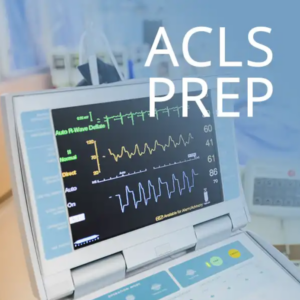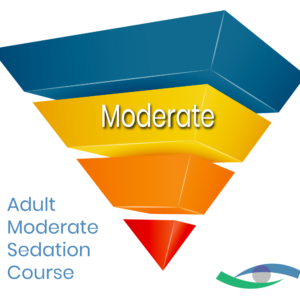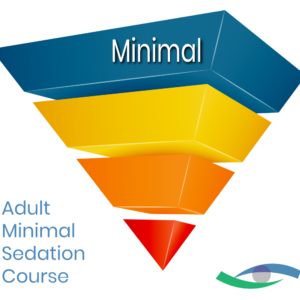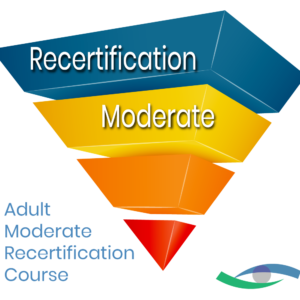The intensive care unit (ICU) is one of the most demanding environments in healthcare, where fast decisions and impeccable sedation skills can literally save lives. Yet, many ICU providers have limited formal education in sedation techniques specific to emergency and critical care environments. Integrating ICU sedation training and strengthening emergency sedation management practices is the key to improving patient safety, minimizing complications, and elevating care standards.
The Growing Need for Sedation Skills in Critical Care
An increasing number of procedures requiring sedation—from bedside wound debridement to urgent endoscopies—happen outside operating rooms, but there aren’t enough trained sedation providers to go around. As a result, many healthcare professionals are having to perform sedation themselves.
Without formal airway skills training, healthcare providers unwittingly put their patients at risk. Improper dosing, inadequate airway protection, or failure to recognize deepening sedation can all lead to life-threatening complications. Yet, procedural sedation is rarely covered deeply in medical or dental school curricula. Advanced sedation techniques specifically for ICU and emergency use are even less emphasized.
Training from The National Sedation Center fills this educational gap by equipping providers with practical, real-world skills. Our courses teach clinicians how to properly assess sedation depth, handle airway challenges quickly, monitor how sedation medications impact cardiac and respiratory function, and more.
Challenges with Sedation in Emergency ICU Settings
The nature of emergency ICU care makes sedation particularly complex. Providers must manage unpredictable patient responses due to underlying conditions, and many ICU patients are fragile. Even slight shifts into deeper sedation levels could lead to respiratory collapse.
Emergency sedation management means being prepared to handle the following complications the moment they begin to emerge:
- Rapid changes in airway status: ICU patients can lose their ability to maintain an open airway with little warning. Providers must recognize early signs like stridor, shallow breathing, or decreased oxygen saturation and respond immediately with airway maneuvers.
- Unpredictable medication effects: Sedation drugs can behave very differently in ICU patients due to possible organ dysfunction or prior medication use. A standard dose deemed safe in a healthy person might cause deeper sedation or hypotension in an ICU patient.
- Hemodynamic instability: Many sedation agents lower blood pressure or depress cardiac function, which can be dangerous in patients already struggling with perfusion. Continuous monitoring and rapid adjustments to sedation levels are essential to maintain cardiovascular stability.
- Progression to deeper sedation: Sedation is a continuum, and ICU patients can unexpectedly shift from moderate sedation into deep sedation or even unresponsiveness. Providers must be trained to recognize these changes quickly and know how to escalate airway support or reduce sedation as needed.
- Aspiration: Patients under sedation lose protective airway reflexes, especially if sedation deepens beyond the intended levels. Providers must anticipate aspiration risks during procedures and put appropriate airway protections in place.
Best Practices to Improve ICU Sedation Management
Building strong sedation skills across ICU and emergency care teams is a proven way to improve patient safety and boost provider confidence. In the high-stress critical care environment, the following best practices lead to better outcomes:
- Formal sedation training: Mastery of pharmacology, monitoring techniques, and the Richmond Agitation-Sedation Scale (RASS) gives providers better judgment to adjust sedation levels safely during procedures.
- Structured emergency airway management skills: Providers must be ready to act fast if a patient’s airway becomes blocked or breathing slows down. Training focuses on when to use basic maneuvers, provide extra oxygen, or escalate to more advanced airway support.
- Continuous patient monitoring: Vital signs alone don’t tell the full story during sedation. Providers must learn to spot more subtle changes, like shifts in consciousness or breathing patterns, that signal a patient might be in trouble.
- Team-based care approach: Sedation is safer when everyone communicates clearly and works together. Nurses, respiratory therapists, and providers must stay on the same page to respond quickly when a patient’s condition shifts.
Why Sedation Training Should Be Prioritized Across Specialties
Whether you’re treating burns, performing wound care, or managing bedside procedures, sedation is often a part of ICU care. Without proper training, what starts as a straightforward procedure can quickly become risky. Advanced sedation techniques specific to critical care help providers manage these situations more safely and effectively. Here are some specific reasons to prioritize sedation training across specialties:
- Confident sedation for urgent bedside procedures: Providers learn to assess the situation quickly, choose the right sedation level, and stay in control from start to finish.
- Better pain and anxiety control: Proper sedation reduces patient agitation and improves cooperation. It also supports a smoother recovery, whether the patient stays in the ICU or transitions out.
- Faster response in high-pressure moments: Being trained to act without relying on someone else’s airway skills can make the difference between stabilizing a patient or losing valuable minutes while waiting for a specialist to arrive.
How Training Elevates Care Quality and Patient Safety
When healthcare teams are properly trained to give sedation in critical care settings, outcomes improve, as does confidence across the unit. Certification in moderate and procedural sedation signals that a provider understands current safety standards and is equipped to apply them in high-pressure situations. Hospitals and clinics that invest in ICU sedation training often see measurable benefits, including:
- Fewer unexpected intubations during sedation
- Reduced incidences of sedation-related complications such as hypotension, respiratory arrest, or prolonged ICU stays
- Higher patient satisfaction due to better pain and anxiety control
- Stronger teamwork and communication between providers, nurses, and respiratory staff
Advance Your Practice with ICU Sedation Training
The National Sedation Center understands the urgency and responsibility of providing the proper ICU patient safety protocols, including effective sedation. Our program is the first of its kind to offer standardized, evidence-based sedation education specifically for non-operating room providers. Our network of instructors across the US and Canada ensures that students not only learn but can demonstrate their competency. Train with us to improve care quality, meet industry standards, and become part of a nationally recognized database of sedation-certified professionals. Contact us with any questions you have, or register for a course online today.






